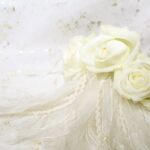Qualities and Engagement Pearl Rings stones
Pearl rings are beautiful and valuable, just like diamonds and other gemstones. Pearls are assessed differently from other gems. The most important quality factors for pearls are luster, color, shape, size, and surface. A pearl with a lack of any one of these qualities would be less valuable than a pearl that michael afton is well-rounded.
Our Pearl Buying Guide provides more information about these factors as well as how pearls are graded.
Wedding Pearl Rings Shape
It is difficult to predict or control the shape of pearls that mollusks produce. Baroque pearls are pearls that have irregular shapes. Round pearls are the rarest so they are more valuable.
Round pearls should be perfectly spheres and not ovals. They should be uniform in color and luster. The majority of pearl rings will cover the bottom half of a pearl. This is a good thing for budget-minded buyers.
Surface
Surface is closely related to shape. It refers to how smooth and clean the pearl is. A pearl should not have any dimples, scratches or other irregularities. A pearl’s shape and value will be affected if it has any irregularities, such as a groove or band.
Size
Pearls are more expensive if they ring types are larger. A Wedding Pearl Rings center stone should be 8mm in diameter. Make sure to consider all quality factors before you make a purchase.
Tips for Wedding Pearl Rings Stones
- Are you drilling or undrilled?
Undrilled pearls will give you more freedom when designing jewelry. Because holes can be used for minor imperfections, lower quality pearls will usually be sold in strands and drilled. Undrilled pearls of the highest quality are sold loose. Undrilled pearls are more expensive than drilled pearls.
- Pearl Treatments
Pearls can be treated or enhanced in many ways, just like other gemstones. Some can enhance the pearl’s visual appeal, while others can cause damage or unintended consequences.
Sometimes, freshwater pearls can be dyed to produce a variety of colors. This is usually done to reduce the quality of pearls. If the dyed color of the pearls is very dark, it will appear artificial. Because dye concentrates around trinket dish drill holes, it is easy to detect.
- Imitation Pearls
Pieces that resemble real pearls, also known as imitation, faux, and fake pearls, are made to look or act like real pearls. As imitations of pearls, you’ll find many pieces made from plastic or glass coated with opalescent paint.
A fake pearl is one that’s just too perfect. Except for pearls of the finest quality, all pearls will display tiny surface irregularities. Cultured pearls will look translucent and rippled when viewed under a microscope or loupe. This can be seen best when a strong light source is placed to one side of the pearl. These rippled layers are natural layers made of nacre.
How to Care for Your Wedding Pearl Rings?
Pearls are one of the most sought-after gemstones. Their Mohs hardness, which is a measure of resistance to scratching, is very low at 2.5-4.5. A pearl is not much harder than a fingernail and will scratch easily. These gems are also extremely sensitive to chemicals and heat. Because pearls are made of calcium carbonate and can be damaged by mild acids.
- Setting, wearing and storing pearls requires special attention.
- Setting Your Wedding Pearl Rings stone
Pearls are usually set by jewelers who drill on either one or both ends. The jeweler will insert a glue-coated needle into the hole to set the pearl. The glue should dry and the pearl will not spin or fall out after it has dried. A pearl may spin if it is held in a standard prong setting, as with other gems. This can scratch the pearl. Sometimes pearls are glued to prongs.


